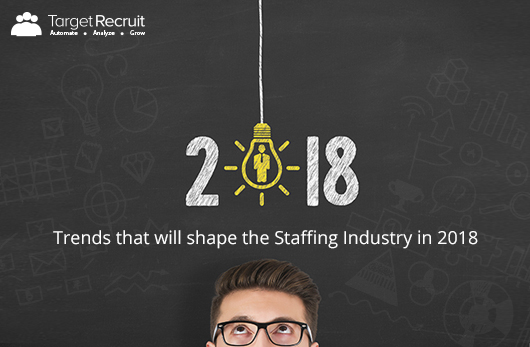A recent report by Staffing Industry Analysts on AI and robotics indicated that 47% of the total US employment was at high risk of computerization within next 10-20 years. Most of the industries are not ready to embrace Artificial Intelligence, yet they have no option but to prepare for its arrival.
Fortunately for the healthcare staffing industry, the average probability of computerization is 0.242. Jobs that bear the highest risk of being automated are the ones that are highly technical with little patient interaction. Lab technicians, Pharmacy Aides and Equipment Preparers are some of the positions that are at risk. On the other hand, jobs that need a high level of manual dexterity or creativity are marked safe, like those of Physicians.
Artificial Intelligence and Robotics are not all negative and should not be looked as a threat. The subsets of AI like Virtual Assistants, Augmented Reality and Machine Learning have numerous applications within the healthcare and healthcare staffing space. Staffing firms will include automated work solutions in their portfolio when these technologies are further developed. Let’s look at how AI and its related technologies can impact Healthcare Staffing, in a positive way.
Better hiring decisions
One of the most important tasks in staffing is to help hiring managers find the best candidate to fill job openings. With the need for credential verification, the task is even more arduous in healthcare staffing. AI can ease this task with top notch accuracy through Machine Learning (ML). ML can also be coupled with adaptive online assessments and it can even predict how well a person is likely to perform at his job if hired. This way, smarter hiring decisions can be made quickly, leading to a decreased time to fill vacancies and a reduction in cost.
Efficient management of contingent workforce
Virtual Assistants (AI enabled embedded intelligence) can help users by guiding them through all the tasks of Contingent Workforce Management hiring – making workflows easier, simpler and efficient. Virtual assistants can even make relevant suggestions, if they are fed the proper business processes, preferences and policies.
Predicting staffing needs
Artificial Intelligence risk monitoring and treatment algorithms can analyze electronic health records of all patients in the hospital and predict the staffing requirements based on the risk posed in the near future. In such a situation, hospitals can be well prepared to meet these requirements with contingent workforce hiring.
________
These are just a few of the benefits AI can provide within the healthcare and healthcare staffing space. Increased used of AI with existing technologies for healthcare hiring will enable faster decision making and improve productivity in the future. AI can provide valuable insights to the healthcare business and can enhance patient care. Coupled with human expertise, AI will help drive cost savings and improve talent quality.

 Last month, we wrote a blog on “
Last month, we wrote a blog on “


 Staffing Market size of US is expected to reach a total revenue of $145.1 Bn, according to a research by Staffing Industry Analysts. The industry has been steadily growing with a rise of 3% each year. As per SIA, the forecast is a little dim due to the maturity of this expansion cycle and a sluggish GDP growth. However, some of the reforms are expected to give the industry the push it needs.
Staffing Market size of US is expected to reach a total revenue of $145.1 Bn, according to a research by Staffing Industry Analysts. The industry has been steadily growing with a rise of 3% each year. As per SIA, the forecast is a little dim due to the maturity of this expansion cycle and a sluggish GDP growth. However, some of the reforms are expected to give the industry the push it needs.










